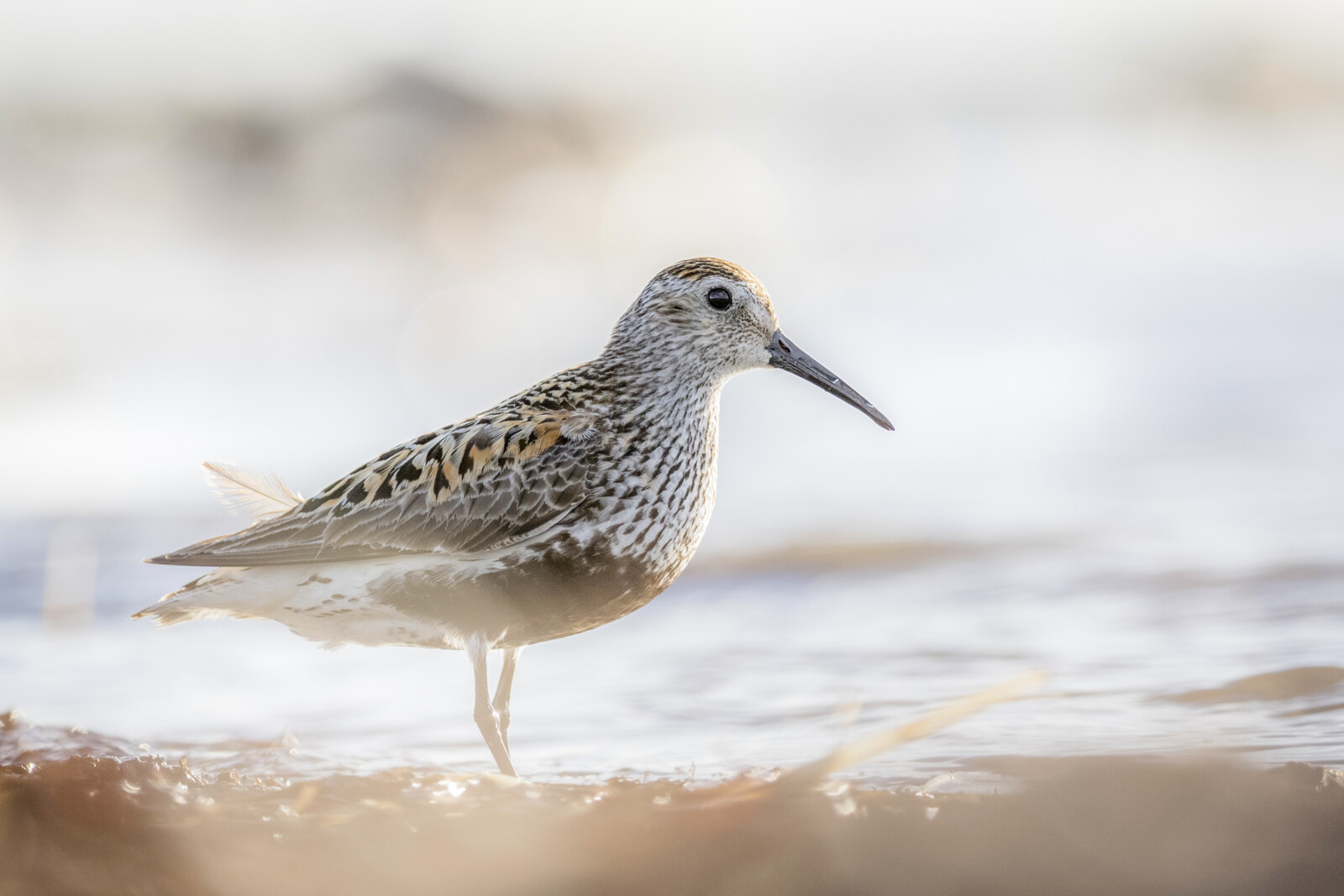Dunlin
- Dunlin
- https://linnuriik.ee/wp-content/uploads/2021/09/Soorudi6-Kauro-Kuik-1024x683.jpg
- Keemu linnud
- https://linnuriik.ee/wp-content/uploads/2021/09/soorydi_salvestuVRunnel.mp3
Dunlin. Photo: Kauro Kuik
Introduction
Latin Calidris alpina
Estonian Soorüdi
Also known as: no known names
Status in Estonia
Breeding and wintering bird.
Description
In the summer, the adult bird has a distinctive black belly patch and its back is a varied reddish-brown. In winter, the top side is a uniform brownish grey, with a well-defined light grey breast stripe contrasting with a white belly and the sides are finely striped or totally white. The head appears quite monotonous, with a small and barely noticeable brow stripe; the beak is black and quite long and slightly bent downward.
Size
Body length 17–21 cm, wingspan 32–36 cm, body mass 35–62 g.
Similar species
Curlew sandpiper, sanderling, broad-billed sandpiper, European golden plover, grey plover.
Distribution
Two subspecies are common in Europe. The northern and eastern subspecies alpina, which has a longer beak and brighter, more striking colours, breeds in tundra and mountain tundra bogs. The subspecies schinzii (Southern dunlin) breeds in low-grass beach meadows and occasionally in small ponds in raised bogs in Iceland, the British Isles and the Baltic Sea countries. During migration across the British Isles, individuals of the subspecies arctica, which breeds in Northeast Greenland, are also encountered. The Southern dunlin is a rare breeding bird found in Western Estonia, while the alpina subspecies is a very common migratory bird.
Population
Estonia has 180–230 breeding pairs.
Occurrence in Estonia
The alpina subspecies migrates from May to June and July to October. The Southern dunlin arrives at the breeding grounds in March and April.
Diet
During breeding, it primarily eats insects and their larvae, although it also consumes crustaceans, molluscs and other aquatic animals. It sometimes also eats seeds and plant leaves.
Habitat
It can be found on the coast of Western Estonia in beach meadows.
Nesting
Males typically arrive at the breeding area earlier than females. The nest is typically lined with plants and hidden by some shrub. The female bird lays an average of four eggs, which are incubated by both birds for 20–22 days. Chicks are nidifugous and leave the nest shortly after hatching. Initially, both parents care for the chicks, but the female departs when the chicks are about a week old. The male stays with the chicks until moulting, which occurs about 19 days after they hatch.
Conservation status and protection
Not under protection. Small predators and birds of prey are main threats.
Distribution and population in Lääne County
In Lääne County, there are two subspecies of dunlin: alpina, an extremely common migratory bird, and Southern dunlin, an uncommon breeding bird.
Alpina, which breed in Arctic regions, are common migratory birds along the coast of Lääne County. They are frequently seen in flocks of hundreds of birds in May and from July to September. They are good to observe from the Haeska birdwatching tower, the parking area near Põgari-Sassi beach meadow, or Cape Puise. Alpina are also common during migration at Riguldi Beach and Vormsi on Cape Austergrunne.
The second subspecies of dunlin, the Southern dunlin, nests on the beach meadows of the Matsalu and Silma nature reserves. Matsalu is the most important breeding location for Southern dunlins in Europe. The Haeska tower and the car park at the edge of the Põgari-Sassi beach meadow are ideal viewing spots.
